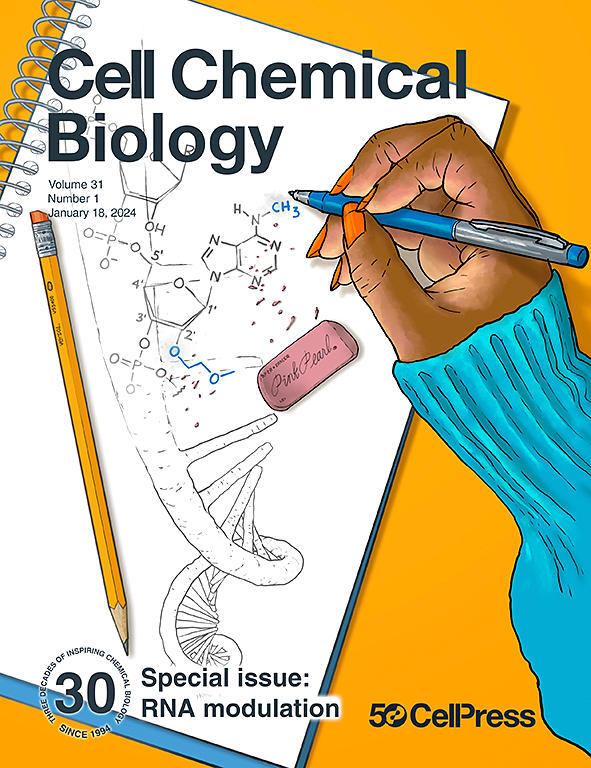rage介导的双胍蛋白膜片激活和人巨噬细胞炎症被一种小分子拮抗剂抑制
IF 7.2
1区 生物学
Q1 BIOCHEMISTRY & MOLECULAR BIOLOGY
引用次数: 0
摘要
RAGE及其细胞内效应分子肌动蛋白聚合酶DIAPH1介导炎症和糖尿病并发症。利用核磁共振波谱和质谱技术,我们建立了RAGE-DIAPH1复合物的结构模型,揭示了RAGE的细胞质尾部(ctRAGE)与DIAPH1的结合如何刺激其肌动蛋白聚合活性,而这种活性被RAGE-DIAPH1相互作用的小分子拮抗剂RAGE406R抑制。RAGE406R - ctRAGE的溶液结构表明RAGE406R阻止rage -隔膜的形成。FRET、肌动蛋白聚合、平滑肌细胞迁移和THP1细胞炎症实验,以及RAGE406R在小鼠炎症和糖尿病伤口愈合模型中的作用的体内研究,支持rage -膜片的这种拮抗模式。最后,用RAGE406R治疗1型糖尿病患者外周血源单核细胞分化的巨噬细胞,可降低趋化因子CCL2的mRNA表达,从而降低炎症反应中关键节点的表达。本文章由计算机程序翻译,如有差异,请以英文原文为准。

RAGE-mediated activation of the formin DIAPH1 and human macrophage inflammation are inhibited by a small molecule antagonist
RAGE and its intracellular effector molecule, the actin polymerase DIAPH1, mediate inflammation and the complications of diabetes. Using NMR spectroscopy and mass spectrometry, we built a structural model of the RAGE-DIAPH1 complex, revealing how binding of the cytoplasmic tail of RAGE (ctRAGE) to DIAPH1 stimulates its actin polymerization activity, which is inhibited by a small molecule antagonist of RAGE-DIAPH1 interaction, RAGE406R. The solution structure of the RAGE406R - ctRAGE suggests that RAGE406R prevents the formation of the RAGE-DIAPH1. FRET, actin polymerization assays, smooth muscle cell migration, and THP1 cell inflammation experiments, together with the in vivo interrogation of the effects of RAGE406R in mouse models of inflammation and diabetic wound healing, support this mode of RAGE-DIAPH1 antagonism. Finally, the treatment of macrophages differentiated from peripheral blood-derived mononuclear cells from humans with type 1 diabetes with RAGE406R reduces the mRNA expression of the chemokine CCL2, diminishing the expression of a key node in the inflammatory response.
求助全文
通过发布文献求助,成功后即可免费获取论文全文。
去求助
来源期刊

Cell Chemical Biology
Biochemistry, Genetics and Molecular Biology-Molecular Medicine
CiteScore
14.70
自引率
2.30%
发文量
143
期刊介绍:
Cell Chemical Biology, a Cell Press journal established in 1994 as Chemistry & Biology, focuses on publishing crucial advances in chemical biology research with broad appeal to our diverse community, spanning basic scientists to clinicians. Pioneering investigations at the chemistry-biology interface, the journal fosters collaboration between these disciplines. We encourage submissions providing significant conceptual advancements of broad interest across chemical, biological, clinical, and related fields. Particularly sought are articles utilizing chemical tools to perturb, visualize, and measure biological systems, offering unique insights into molecular mechanisms, disease biology, and therapeutics.
 求助内容:
求助内容: 应助结果提醒方式:
应助结果提醒方式:


